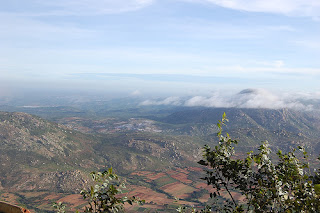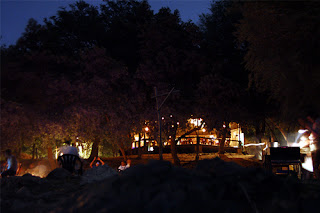Nandi Hills
 Nandi Hills are flat surroundings plains just outside Bangalore. The hills get their name from the beautiful statue of Nandi standing guard outside the Yoganandeeshwara Temple atop the hills.
Nandi Hills are flat surroundings plains just outside Bangalore. The hills get their name from the beautiful statue of Nandi standing guard outside the Yoganandeeshwara Temple atop the hills.
 Nandi Hills are flat surroundings plains just outside Bangalore. The hills get their name from the beautiful statue of Nandi standing guard outside the Yoganandeeshwara Temple atop the hills.
Nandi Hills are flat surroundings plains just outside Bangalore. The hills get their name from the beautiful statue of Nandi standing guard outside the Yoganandeeshwara Temple atop the hills.Reaching the top is easy as there’s a good, mortable road going all the way up. Nandi hills are the place where laziness can be perfected into an art form. The most strenuous activities here are long ambles along the walkways meandering along the hills.
Tipu’s drop, a near 2,000 ft- high sheer cliff has a gory past. It is the place from where convicted prisoners would be hurdled to their death by Tipu Sultan’s decree. From here you would be able to view Bangalore in the distance sparkling beneath you like a giant rangoli decorated with diyas.
Yoganandeeshwara Temple is the abode of Shiva the ascetic at the top the hills was build by the Cholas. This ancient temple also has an inscription in the name of Sambhaji, son of Chhatrapati Shivaji.
Amrita Sarovar is a large tank fed by perennial springs and is called the lake of ambrosia. People visit it in night when it shimmers in the moonlight. Nearby lies the chabootra or platform where Tipu Sultan used to pray.
Nehru Nilaya is the house where Nehru lived in, however now it is a guest house belonging to the Horticulture Department.
Bhognandeshwara Temple is at the base of the Nandi Hills. Nandi hills have only two accommodation options one is the Hotel Mayura Pine Top and the second one is Nehru Nilaya.
Nandi Hills is blessed with a pleasant climate all year round.


















